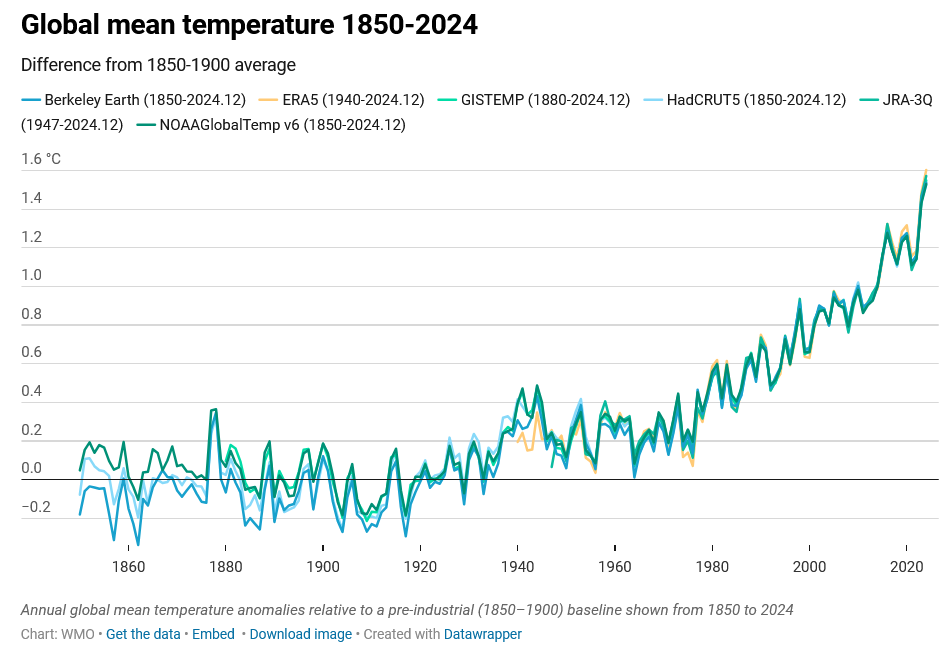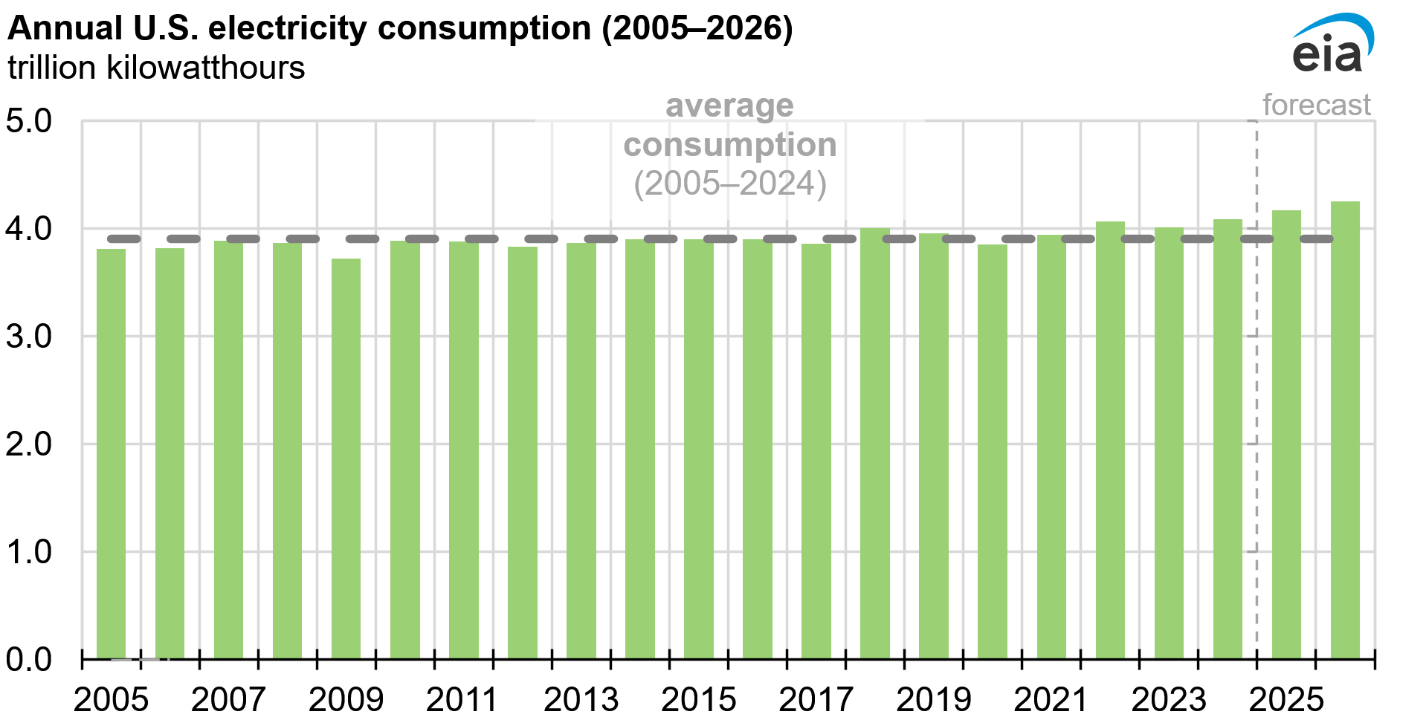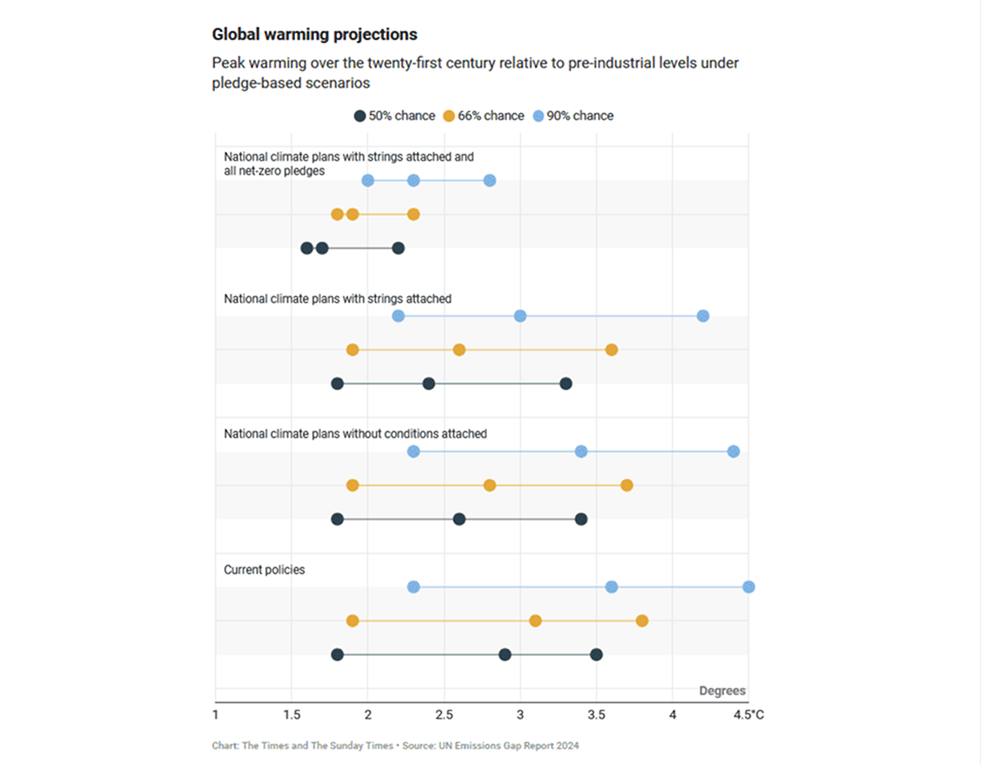Introduction
In January, it was officially announced by NASA (and several other sources) that 2024 was the hottest year on record!
“Earth’s average surface temperature in 2024 was the warmest on record, according to an analysis led by NASA scientists.”1 beating the previous hottest year (2023).
Then in February this year the WMO reported; “The world just had its warmest January on record, according to leading international datasets from the Copernicus Climate Change Service and US National Oceanic and Atmospheric Administration.”2
NASA also states that for “more than half of 2024, average temperatures were more than 1.5 degrees Celsius above the baseline, and the annual average, with mathematical uncertainties, may have exceeded the level for the first time.” This is particularly concerning because the Paris Agreement on climate change (2015) aimed to limit “the increase in the global average temperature to well below 2°C above pre-industrial levels” and pursue efforts “to limit the temperature increase to 1.5°C above pre-industrial levels.”3
The following report will examine some of the more recent scientific findings to better understand the relevance of the Paris accord in today’s warming world.
1. The Paris Accord
The Paris Accord, also known as the Paris Agreement, is an international treaty adopted in 2015 to combat climate change by limiting global temperature rise to well below 2 degrees Celsius above pre-industrial levels, with efforts to limit it to 1.5 degrees as set out and agreed during the UN Climate Change Conference (COP21) in Paris, France, on 12 December 2015.3

Fig 1 Rising global temperatures since 1860 Found at https://wmo.int/news/media-centre/wmo-report-documents-spiralling-weather-and-climate-impacts
The agreement was very low on actual concrete objectives, more aspirational agreeing to reduce fossil fuel consumption, protect forests and green spaces and become more energy efficient.
Under the agreement countries are committed to their own binding steps toward GHG emission reduction and many countries and the EU declared national climate plans to significantly reduce emissions. However, in 2020 in a review of how the accord was working after 5 years Michael Oppenheimer, a climate scientist and policy expert at Princeton University expressed the view that the chances of meeting a 2°C target, was not very likely,4 as demonstrated in Fig 1 with the global temperature already passing 1.5oC in 2024.
2. Expectations and planning
In March this year the Scientific America reported that “Morgan Stanley, JPMorgan and an international banking group have quietly concluded that climate change will likely exceed the Paris Agreement’s 2 degree C goal and are examining how to maintain profits.” It appears to be just one of many who now think that the goals of the Paris accord are unachievable in the current political climate. The President of the USA, the largest single source of GHG IS repealing and reversing most federal climate initiatives; “even going so far as signing new executive orders aimed at boosting domestic production [of coal] at a time when the energy sector is shifting to natural gas and renewables.”5 All in all President Trump has silenced the climate action coalition that comprised of top corporate supporters of climate change, as reported by climatewire “Corporate leaders' retreat from public climate advocacy doesn't mean companies have abandoned their environmental goals, experts said, but top executives are afraid to talk about those targets in a conservative-dominated Washington.”6
However, we should not blame any apparent failure just on political change, one of the key steps required to reduce GHG emissions was reduced energy consumption, this just has not happened; in fact the opposite is true. In the 2024 EVS37 conference in Soul (Korea) during a presentation by the National Renewable Energy Laboratory (NREL) it was predicted that EVs would drive increased demand for electricity as transport transformed from fossil fuels (ICE) to electric batteries (fig 2), and this is an ongoing transformation.7

Fig 2 Electricity demand from EVs found at https://www.nrel.gov/docs/fy24osti/89775.pdf
In 2025 the EIA in their short-term energy outlook also suggest “Electricity consumption will start growing, driven by new demand sources”8 (Fig 3) They highlighted the new demand sources of data centres, and the energy infrastructure to run them, for example Microsoft’s emissions have jumped 29 percent since the company announced its carbon negative pledge in 2020. Google’s emissions have soared by 67 percent over the same period,”9 and the developing world is still trying to catch up with the electrification of their economies.

Fig 3 EIA (Jan 2025) Retrieved from https://www.eia.gov/todayinenergy/detail.php?id=64264
In their Global Energy review of 2025, the EIA went further stating “Global energy demand grew at a faster-than-average pace in 2024 as the consumption of electricity rose around the world – with increased supply of renewables and natural gas covering the majority of additional energy need”.10
Please note 2 things, firstly “natural gas” is not a renewable and emits significant GHG although less than other fossil fuels per unit of energy released, and secondly the use of the word “majority”, meaning less than 100%.9 In other words; emissions are still increasing!
A month later, in another report titled simply “Electricity”11 the IEA (not to be confused with the EIA) noted that the globe was “Entering the Age of Electricity” with “Electrification of buildings, transportation and industry combined with a growing demand for air conditioners and data centres is ushering a shift toward a global economy with electricity at its foundations.”, they go on to predict an average rise of nearly 4% per year until at least 2027. Obviously the increasing demand is making the reduction in GHG emissions that much more difficult, and less likely to be achieved.
We should not be caught completely by surprise; in February Damien Carrington reported in the Guardian newspaper that Prof James Hansen (one of the original scientists to warn of global warming in 1988) as saying “The 2C target is dead, because the global energy use is rising, and it will continue to rise.”12 Hansen and his group are somewhat of an outlier in the climate world as noted by Carrington in his Guardian report who quoted another climate change expert, Dr Zeke Hausfather as saying “While Hansen et al are on the high end of available estimates, we cannot say with any confidence that they are wrong, rather that they just represent something closer to a worst-case outcome”
AXIOS reported that the UN’s own 2024 "Emissions Gap Report,", finds that the world is currently headed for about 2.6°C to 3.1°C (in 2100) of warming compared to preindustrial levels13, not as extreme as Hansen, but not a comforting thought.
The bottom line seems to be that the extraordinary temperatures seen over the last two years, has been caused by the continuing rise in GHG and especially CO2 emissions from the burning of fossil fuels. The high temperatures were exacerbated by the peak of the El Niño climate cycle in 2024 which made the maximum temperatures even hotter. However, after the El Niño ended in mid-2024 the continuing high temperatures in the second half of the year following into 2025 are not fully understood with, in March 2025, the NOAA14 reporting the February highlights as:
- Temperatures were above average over much of the globe, particularly in the Arctic, but much below average over western Canada and the central United States.
- Global and Arctic Sea ice extent ranked lowest on record for February.
- Twelve named storms occurred across the globe in February, which set an all-time record for the month.
Further indications of increasing temperatures are provided by Nikita Yadav. Reporting from Delhi India for the BBC she writes “It's only early April and north India is bracing for extreme heat”15 According to the report “Northern India usually sees heatwaves between April and June, but in recent years, global warming and climate change have caused extreme temperatures to arrive earlier and last longer.” and “Last year, India recorded its hottest day ever at 50.5C in Rajasthan state.”
The requirement to bring rising temperatures under a semblance of control is well understood as set out in Fig 4; the minimum required reductions in GHG emissions are shown by the solid green or blue lines, however the actuality of current emissions are shown by the dashed lines across the top. They demonstrate that if we continue on with current policies then there will be no reduction in GHG emissions, and worse, if the declared national climate plans by individual countries are adhered to then there is next to no improvement.

In Fig 4 Current policies will see the gap between what is required and what is being done continuing to widen Found at https://www.thetimes.com/uk/environment/article/climate-change-action-worse-after-emissions-hit-record-high-n8pcprg75?region=global
The UN Environment Programme (UNEP) had suggested that 2024 would see peak GHG emissions and that reductions going forward would slowly be achieved14, however as we discussed earlier recent policies and advances are being made that are likely to have the opposite effect with increasing energy demand driving GHG emissions up.
Consequently, as things stand, it is looking increasingly likely that limiting of global warming to 2oC is not achievable and continuing with current policies will lead to a substantial increase in global temperatures by the end of the Century.
In Fig 5, the consequences of continuing with current policies is spelt out, a 90% likelihood of a 4.5oC rise in global temperatures by the end of the century, if this happens the world of tomorrow will be a very different place to that of today.

Fig 5 Global warming projections (Source: UN Emissions Gap Report 2024) Found at https://www.thetimes.com/uk/environment/article/climate-change-action-worse-after-emissions-hit-record-high-n8pcprg75?region=global
It is not only banks and the finance sector that is predicting a failure to keep world temperatures under the 2oC increase set out in the Paris Agreement.
France, hosts of COP 21 and the agreement, are themselves planning for such a failure. As far back as May 2023 Science Direct in a piece titled; “France Prepares For 4 °C Rise: "We Can't Escape The Global Reality"16 reported that “France is preparing for temperatures of 4 degrees Celsius (7.2 degrees Fahrenheit) above pre-industrial levels in the country by century's end as the world falls short in meeting climate change targets, a cabinet minister warned Sunday.” And in March this year the French government released their “third national climate adaptation plan”17 “outlining 52 measures aimed at preparing the country for temperature rises that could reach 4C by the end of the century.” The plan lays out a temperature rise trajectory of “2C by 2030, 2.7C by 2050, and 4C by 2100 compared to pre-industrial levels” based upon the national weather agency, Météo-France scientific projections.
Not all weather forecasters agree however; The World Meteorological Organization (WMO) is still suggesting that keeping the temperature well below the 2oC is still possible,18 however it must be remembered that the WMO is a United Nations body and is likely to support the UN position, which is to persuade more climate actions from governments around the world, and goes on to quote the UN President as saying “Our planet is issuing more distress signals -- but this report shows that limiting long-term global temperature rise to 1.5 degrees Celsius is still possible. Leaders must step up to make it happen -- seizing the benefits of cheap, clean renewables for their people and economies.”
All the above scenarios assume that the world, as noted in the Paris Accord, “reduce fossil fuel consumption, protect forests and green spaces and become more energy efficient” however there are a number of proponents, including some in the UN, who believe that Carbon Capture and storage CCS will be needed to limit CO2 in the atmosphere. *
3. Carbon Capture & Storage (CCS)
Many of the climate outcomes projected by the IPCC and others have included an assumption of a [yet to be invented] technology that will bolster the move away from fossil fuels towards renewables by reducing the CO2 present in the atmosphere.19
There are currently 2 ways of removing carbon from the atmosphere:
- Carbon Capture (CC), generally carried out at the point of emissions, i.e. the chimney or exhaust pipe on a power station or industrial process.
- Direct air capture (DAC) technologies extract CO2 directly from the atmosphere at any location by moving free air through some sort of filter.
Carbon Capture and Storage (CCS)
According to the Society of Petroleum Engineers (SPE)20 Carbon Capture & Storage (CCS) has been historically used in the Oil industry to capture the free gas in the oil well and to reinject back into the reservoir to maintain the reservoir pressure to aid extraction of further oil.
* There are also a small number of the scientific society who believe climate engineering might be viable, however this approach is very unclear and will not be discussed in this article.

Fig 6 CO2 capture, transport, and storage process. Source: https://jpt.spe.org/twa/carbon-capture-and-storage-the-past-present-and-future
Today there is increasing interest, leading scientists to explore its potential for capturing CO2 emissions from industrial sources such as power plants and factories and reusing them or sequestering them underground to mitigate climate change (Fig. 6).
Direct Air Capture (DAC)
The IEA describe DAC as follows; “technologies [that] extract CO2 directly from the atmosphere at any location, …”21 The CO2 in the atmosphere is much more dilute than in, for example, flue gas from a power station or a cement plant, consequently the DAC’s higher energy needs leads to increased costs. Like CC the captured CO2 can be permanently stored in deep geological formations or reused on other applications.
Both the CCS and DAC industry is in its infancy and needs to grow exponentially to contribute significantly to CO2 removal; climate models from the IPCC and the IEA show the removal capacity required being around 1 billion metric tons of CO2 by 2030 and several billions of tons by 2050 but to date the units are of very small capacity. Given the lack of progress in reducing emissions it is of little wonder that the Co2 removal sector has recently started to attract governmental support for further research.21
There have been several trail units built in Iceland, an ideal venue because of its 100% green energy, primarily hydropower and geothermal steam and heat22.
One of the leaders, Climeworks have recently started to commission a new plant that is designed for a capacity of up to 36,000 tons per year.23 A significant step up from the 45 million metric tons that are being captured by all the units combined today; as they say “an important milestone on the way to megaton capacity by 2030 and gigaton by 2050.”
The Scientific America reported that in wind powered DAC plant is planned in Texas USA that will eventually be capable a of removing 500,000 tons of CO2 in 2028,24 half the megaton milestone of Climeworks, but less than 1% of what will be required globally by 2030.
Conclusion
Given the above it appears the 2°C climate goal of the Paris Agreement is no longer realistically achievable under current conditions. The world is not only failing to reduce emissions fast enough, but in many areas is actively increasing them. While theoretical pathways involving aggressive CCS development or drastic emissions cuts still exist, the political will, economic structure, and technological maturity required make such outcomes highly improbable.
If it is indeed true that the 2°C target is unachievable, it is time to face this reality and understand what needs to be done additionally to transitioning away from fossil fuels to live in the +2oC world and plan to ensure that the planet does not endure the 4.5oC maximum increase forecast for the end of the century.
List of figures
Fig 1 Global mean Temperature 1850-2024. Retrieved from https://wmo.int/news/media-centre/wmo-report-documents-spiralling-weather-and-climate-impacts
Fig 2 Electricity demand from EVs. Retrieved from https://www.nrel.gov/docs/fy24osti/89775.pdf
Fig 3 Annual U.S. electricity consumption (2005-2026) Retrieved from https://www.eia.gov/todayinenergy/detail.php?id=64264
Fig 4 Global emissions from 2015 to 2035. Retrieved from https://www.thetimes.com/uk/environment/article/climate-change-action-worse-after-emissions-hit-record-high-n8pcprg75?region=global
Fig 5 Global warming projections. Retrieved from https://www.thetimes.com/uk/environment/article/climate-change-action-worse-after-emissions-hit-record-high-n8pcprg75?region=global
Fig 6 CO2 capture, transport, and storage process. Retrieved from https://jpt.spe.org/twa/carbon-capture-and-storage-the-past-present-and-future
References and Further reading
1 Bardan, R. (2025) Temperatures Rising. Retrieved from
https://www.nasa.gov/news-release/temperatures-rising-nasa-confirms-2024-warmest-year-on-record/
2 WMO (2025) January 2025 sees record global temperatures despite La Niña Retrieved from https://wmo.int/media/news/january-2025-sees-record-global-temperatures-despite-la-nina
3 UNFCC (2016) The Paris Agreement Retrieved from https://unfccc.int/process-and-meetings/the-paris-agreement
4 Cornwall, W. (2020) The Paris climate pact is 5 years old. Is it working? Retrieved from https://www.science.org/content/article/paris-climate-pact-5-years-old-it-working
5 News Week. Trump Wants To Revive Coal. The Energy Sector Has Moved On. Retrieved from https://www.newsweek.com/trump-wants-revive-coal-energy-sector-has-moved-2057123
6 E&E News. ‘Fear and chaos’: Big business is no longer ‘all in’ on climate. Retrieved from https://www.eenews.net/articles/fear-and-chaos-big-business-is-no-longer-all-in-on-climate/
7 NREL. Projecting Electric Vehicle Electricity Demands and Charging Loads. Retrieved from https://www.nrel.gov/docs/fy24osti/89775.pdf
8 EIA EIA extends five key energy forecasts through December 2026 https://www.eia.gov/todayinenergy/detail.php?id=64264
9 NPR. AI brings soaring emissions for Google and Microsoft, a major contributor to climate change https://www.npr.org/2024/07/12/g-s1-9545/ai-brings-soaring-emissions-for-google-and-microsoft-a-major-contributor-to-climate-change
10 EIA Growth in global energy demand surged in 2024 to almost twice its recent average. Retrieved from https://www.iea.org/news/growth-in-global-energy-demand-surged-in-2024-to-almost-twice-its-recent-average
11 IEA. Electricity. Retrieved from https://www.iea.org/reports/electricity-2025
12 The Guardian. Climate change target of 2C is ‘dead’, says renowned climate scientist. Retrieved from https://www.theguardian.com/environment/2025/feb/04/climate-change-target-of-2c-is-dead-says-renowned-climate-scientist?utm
13 AXIOS. World hurtling past Paris Agreement climate goals, UN warns. Retrieved from https://www.axios.com/2024/10/24/global-warming-exceed-paris-targets
14 NOAA. Assessing the Global Climate in February 2025. Retrieved from Https://www.ncei.noaa.gov/news/global-climate-202502
15 BBC. It's only early April and north India is bracing for extreme heat. Retrieved from https://www.bbc.com/news/articles/cwyn741gg73o
16 Science Alert. France Prepares For 4 °C Rise: "We Can't Escape The Global Reality" Retrieved from https://www.sciencealert.com/france-prepares-for-4-c-rise-we-cant-escape-the-global-reality
17 RFI. France rolls out plan to prepare for 4C temperature rise by end of century. Retrieved from https://www.rfi.fr/en/environment/20250310-france-rolls-out-plan-to-prepare-for-4c-temperature-rise-by-end-of-century-climate-change
18 WMO. WMO report documents spiralling weather and climate impacts. Retrieved from https://wmo.int/news/media-centre/wmo-report-documents-spiralling-weather-and-climate-impacts
19 Faber, G. (2025). Direct Air Capture: Definition and Company Analysis. Retrieved from https://www.energy.gov/sites/default/files/2025-01/Direct%20Air%20Capture%20Definition%20and%20Company%20Analysis%20Report.pdf
20 THEWAYAHEAD. Carbon Capture and Storage: The Past, Present, and Future. Retrieved from https://jpt.spe.org/twa/carbon-capture-and-storage-the-past-present-and-future
21 IEA. Direct Air Capture. Retrieved from https://www.iea.org/energy-system/carbon-capture-utilisation-and-storage/direct-air-capture
22 Nordic Energy Research. Iceland aims to be a pioneer in the green energy transition. Retrieved from https://www.nordicenergy.org/article/iceland-aims-to-be-a-pioneer-in-the-green-energy-transition/
23 Climeworks. Mammoth: our newest facility. Retrieved from https://climeworks.com/plant-mammoth
24 Scientific American. World’s First Carbon Removal Plant Powered Directly by Wind Planned. Retrieved from https://www.scientificamerican.com/article/worlds-first-carbon-capture-plant-powered-directly-by-wind-planned/


